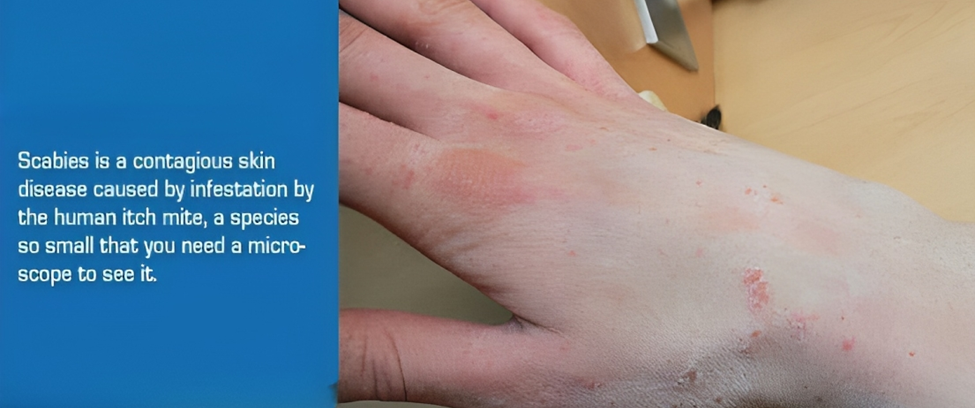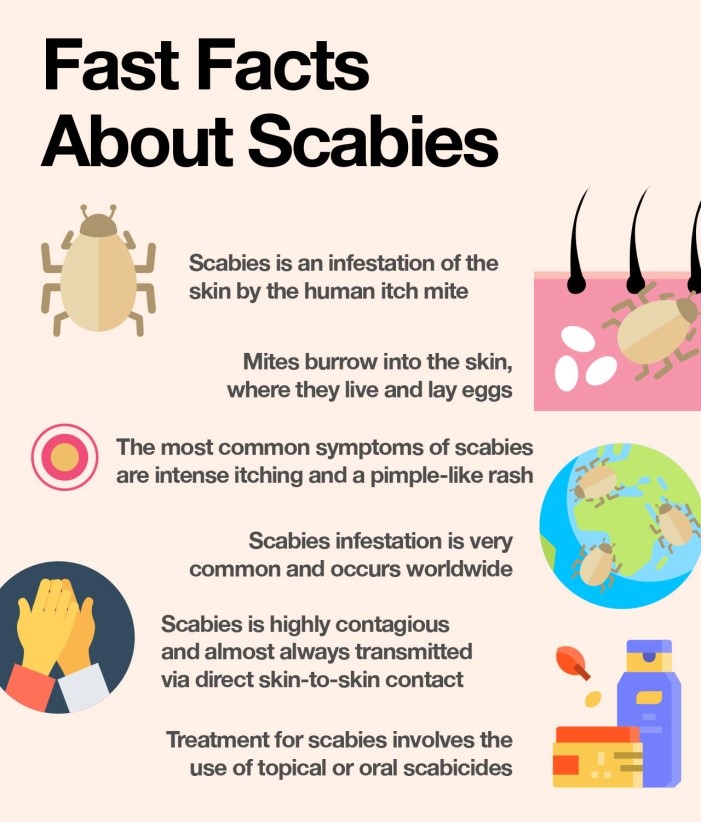





Copyright infringement not intended
Picture Courtesy: www.doc4kids.com
Context: Malawi is experiencing a scabies outbreak, with 4,152 cases reported in the past week, highlighting the highly contagious nature of the disease transmitted through skin-to-skin contact and causing intense skin irritation and discomfort.
Details
|
Malawi ●Malawi is a landlocked country in southeastern Africa. It is bordered by Tanzania to the north, Zambia to the west, Mozambique to the south and east, and Lake Malawi to the east. ●It is known for its diverse landscape, which includes mountains, plateaus, valleys, and lakes. ●It is heavily dependent on agriculture, which accounts for about 30% of GDP. Malawi is also a major producer of tobacco, tea, and sugar. ●Malawi is one of the countries most vulnerable to the impacts of climate change. The country is already experiencing more extreme weather events, such as droughts, floods, and cyclones. These events are having a devastating impact on agriculture, food security, and health. ●The scabies outbreak that is currently happening in Malawi is a clear example of how the climate crisis is impacting human health. The heatwave, high humidity, and water shortages across the country are making people more vulnerable to disease outbreaks.
|
Scabies
|
Causes and Transmission |
●Scabies is caused by infestation with the Sarcoptes scabies mite. These mites burrow into the top layer of the skin, where they lay eggs and cause an allergic reaction, leading to intense itching and a rash. ●Scabies is highly contagious and spreads through close skin-to-skin contact. It can also spread through infected personal items such as clothing and bedding. Individuals with crusted scabies are particularly infectious. |
|
Global Burden |
●Scabies is prevalent worldwide but is particularly common in low-income tropical areas. It affects over 200 million people at any given time and more than 400 million people cumulatively every year. ●Children and older people in resource-poor areas are at higher risk. Prevalence among children in these settings can vary from 5% to 50%. |
|
Complications |
●Scabies can lead to various complications, including skin sores and serious conditions such as kidney disease, heart disease, and septicaemia (bloodstream infection). |
|
Symptoms |
●Common Symptoms typically include severe itching, especially at night, linear burrows, and papules on the skin. Infants and small children might develop a more widespread rash, including on palms, soles of feet, ankles, and scalp. |
|
Crusted Scabies |
●Crusted scabies is a severe and highly infectious form of scabies. It involves a large number of mites (thousands or millions) and can cause dry, scaly areas on the skin. Interestingly, it might not cause itching in affected individuals. ●Crusted scabies can easily spread and cause secondary infections. It is life-threatening and requires intense treatment with both topical and oral medications. |
|
Diagnosis and Clinical Features |
●Scabies is diagnosed based on clinical recognition of typical features. ●Visual imaging techniques and microscopy of skin scrapings can support the diagnosis but are not always necessary, especially in highly endemic areas. ●Patients typically present with severe itch, linear burrows, and papules around finger webs, wrists, upper and lower limbs, and belt area. ●In infants and small children, the rash might be more widespread, including involvement of palms, soles of feet, ankles, and sometimes the scalp. |
|
Treatment |
●Common topical treatments include 5% permethrin cream, 0.5% malathion in aqueous base, 10–25% benzyl benzoate emulsion, and 5–10% sulphur ointment. ●Ivermectin taken orally is also highly effective but should not be taken by pregnant women or children weighing less than 15 kg. ●Treatments do not kill the parasite's eggs, so treatment needs to be repeated to kill newly hatched mites. ●All household members should be treated to prevent the spread, even if they don't show symptoms. |
|
Prevention and Disease Control |
●Prevention involves avoiding skin-to-skin contact with infected individuals, washing and drying infested bedding and clothing in hot water, and cleaning living spaces thoroughly after treatment. ●Mass Drug Administration (MDA) strategies are used in areas with high prevalence (10% or greater) to control scabies. Ivermectin and topical agents like permethrin 5% cream are administered. Ongoing research is exploring the effectiveness of one dose of treatment for MDA. |
|
WHO Response and Global Targets |
●Scabies is recognized as a Neglected Tropical Disease (NTD) by the WHO. WHO's 2030 global targets include incorporating scabies management into universal health coverage and conducting MDA interventions in endemic areas (prevalence of 10% or greater). ●WHO collaborates with member states and partners to develop control strategies and outbreak response plans. Research efforts are ongoing to refine guidelines and strategies, especially in low-prevalence areas. |
|
Challenges and Outbreaks |
●Outbreaks can occur in closed institutional settings and open community settings, with refugee or internally displaced person camps being particularly high risk due to overcrowding. ●Outbreaks can be difficult to control, and general principles include surveillance, early confirmation of outbreaks, and involvement of public health experts. |

Conclusion
Must Read Articles:
Neglected Tropical Diseases: https://www.iasgyan.in/blogs/neglected-tropical-diseases
|
PRACTICE QUESTION Q. How does climate change influence the occurrence and distribution of disease outbreaks, and what are some specific examples of diseases that have been impacted by changes in climate patterns? |











© 2025 iasgyan. All right reserved